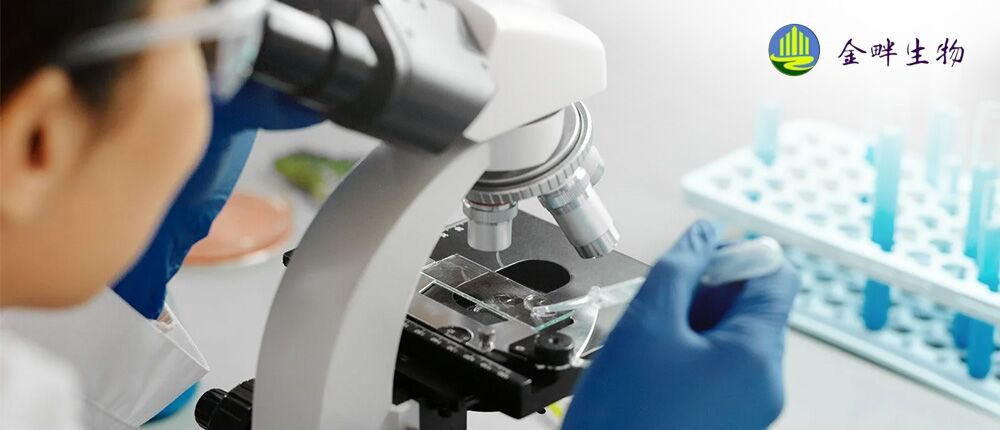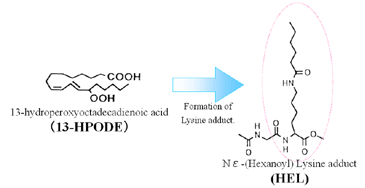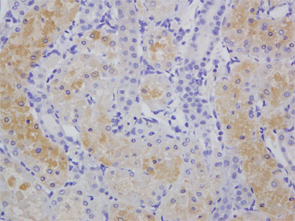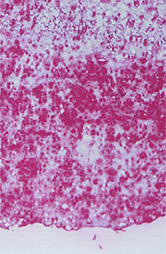| 1) |
Yoji Kato, Yoko Mori, Yuko Makino, Yasujiro Morimitsu, Sadayuki Hiroi, Toshitsugu Ishikawa, Toshihiko Osawa, Formation of N epsilon-(hexanonyl) lysine in protein exposed to lipid hydroperoxide. J Biol Chem 274(29), p20406-20414 (1999)
Identification of HEL, which is lysine adduct of 13-HPODE. |
| 2) |
Kato Y, Miyake Y, Yamamoto K, Shimomura Y, Ochi H, Mori Y, Osawa T, Preparation of a monoclonal antibody to N(epsilon)-(Hexanonyl)lysine: application to the evaluation of protective effects of flavonoid supplementation against exercise-induced oxidative stress in rat skeletal muscle. Biochem Biophys Res Commun 274(2),p389-393(2000)
Development and characterization of anti HEL monoclonal antibody. |
| 3) |
Fukuchi Y, Miura Y, Nabeno Y, Kato Y, Osawa T, Naito M, Immunohistochemical detection of oxidative stress biomarkers, dityrosine and N(epsilon)-(hexanoyl)lysine, and C-reactive protein in rabbit atherosclerotic lesions. J Atheroscler Thromb 15(4)p185-192(2008)
Application to rabbit atherosclerotic lesions. |
| 4) |
Maeda R, Noiri E, Isobe H, Homma T, Tanaka T, Negishi K, Doi K, Fujita T, Nakamura E, A water-soluble fullerene vesicle alleviates angiotensin II-induced oxidative stress in human umbilical venous endothelial cells. Hypertens Res 31(1)p141-151(2008)
Application to cultured cells (HUVECs). |
| 5) |
Sango K, Yanagisawa H, Kato K, Kato N, Hirooka H, Watabe K: Differential Effects of High Glucose and Methylglyoxal on Viability and Polyol Metabolism in Immortalized Adult Mouse Schwann Cells. Open Diabetes J. 1, p1-11(2008)
Application to cultured cell from mouse. |
|






